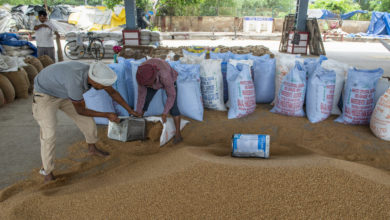What Has Happened in Iran Since the Death of Mahsa Amini

Youn the wake of the death of 22-year-old Mahsa Amini, who died in custody of the Iran’s morality police last month, civil unrest in the country has grown to a scale larger than what Iran has experienced in years. Protesters are calling for justice for Amini as well as personal and political liberties and accountability from the nation’s government.
Rights groups claim that protests have led to hundreds and even thousands of arrests. Because the Iranian government controls internet usage, Internet access is still restricted in Iran. Those analyzing the country’s protests say that the movement likely won’t die down soon.
Here’s what to know:
Protests were violent
Protests have been ongoing since mid-September, it’s unclear how many people have died at the hands of police during the protests. On Sept. 26, Iran’s state-run broadcasting service reported that 41 people had died including protestors and security forces. On Oct. 4, Iran Human Rights, a Norway-based non-profit organization, said that at most 154 had been killed in protests.
At least 66 deaths reportedly took placeon Sept. 30 in Zahedan, now called “Bloody Friday,” according to Amnesty International. Security forces in Zahedan, the capital of the Sistan and Baluchestan province, and home to some of the highest death counts since protests began, initiated a brutal crackdown where they deployed live ammunition, metal pellets and teargas on protesters, worshippers and bystanders after Friday prayers outside the city’s main mosque.
Nika Shakarami (16 years old) was killed as a protestor
Nika Shakarami (a teenage protestor who’s mother says she was killed by security forces) is the case of one of most high-profile young people dying at the protests.
Shakarami, a friend who had sent her a message indicating that she was being monitored by police, went missing in Tehran on September 20.
Shakarami, according to police, was found dead outside a nearby building by her family.
Tehran judiciary official, Mohammad Shahriari, told the state media that Shakarami had sustained “multiple fractures… in the pelvis, head, upper and lower limbs, arms and legs, which indicate that the person was thrown from a height.”
Her family disputes this account, and Shakarami’s mother spoke out in a video to Radio Farda that the injuries she saw on her daughter’s body were very different from what authorities described. BBC reports that Shakarami’s mother said a forensic report indicated that Shakarami was killed by blunt force trauma to the head and a death certificate obtained by BBC stated that she suffered “multiple injuries caused by blows with a hard object.”
After Shakrami’s death, members of her family were seen on state television confirming that her cause of death was falling from a building. Shakarami’s mother also told Radio Farda that these were forced confessions and that authorities threatened their family’s safety if they didn’t cooperate.
The current position of the protests
The nationwide protests have only grown since September after Amini’s death. Beginning as demonstrations on the streets and through social media condemning what protestors say was Amini’s unlawful killing, the protests in Iran are now fueled by the government’s brutal oppression demonstrated in the past few weeks and longstanding frustration against the country’s authoritarian regime.
People witnessed unarmed protestors being bullied and harassed at rallies throughout the country.
Students protests are prominent at the universities in Iran, marking a significant change after decades of political dormant youth. Particularly aggressive authorities are seen at Tehran’s Sharif University. New York TimesReports indicate that campus residents witnessed bloody scenes, including bullets being fired and tear gas being deployed.
Iranians are expressing a range of frustrations over issues like the country’s mandatory modesty laws, the harsh restrictions imposed on people’s political choices and speech and the government’s discriminatory practices against ethnic minorities. IHR reported that 1,200 people were arrested in the past three weeks. These included 29 journalists, 20 activists, and 19 teachers according to government arrest records.
On Sept. 21, Iran’s top-level military authorities gave orders to security forces in all provinces to “severely confront troublemakers and anti-revolutionaries,” according to an investigation by Amnesty International. Internet access has been blocked by the authorities in an apparent attempt to prevent information from spreading.
The reaction from the rest of the globe
World leaders have condemned the Iranian government’s actions since news of Amini’s death and protests spread. Protests have expanded abroad and people outside of the country have taken up circulating Iranian accounts and footage of what’s going on to raise awareness. The Iranian authorities are not slowing down in arresting and suppressing protestors, despite all the media attention. The country’s supreme leader Ayatollah Ali Khamenei said the “riots and insecurities were designed by America and the Zionist regime” to undermine his government’s authority.
The U.S. and Canada have released sanctions against Iranians officials, adding to their existing sanctions against the country’s government. E.U. E.U. Sanctions should be imposed on Iranian officials. America’s sanctions targeted seven senior Iranian officials, including the interior minister, Ahmad Vahidi, who oversees the country’s law enforcement, and the communications minister, Eisa Zarepour, whose position points to involvement in the country’s internet blockage.
On Oct. 3, President Biden shared support for the protests saying, “The United States stands with Iranian women and all the citizens of Iran who are inspiring the world with their bravery,” and added that his administration “will be imposing further costs on perpetrators of violence against peaceful protestors.”
Here are more must-read stories from TIME





